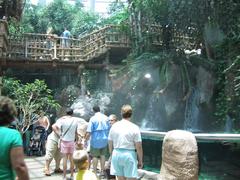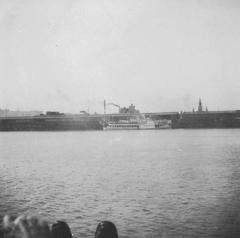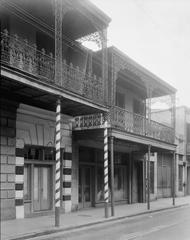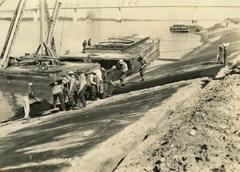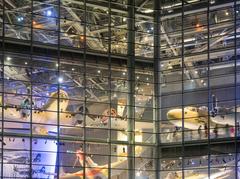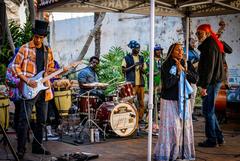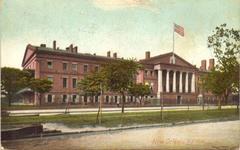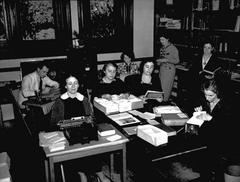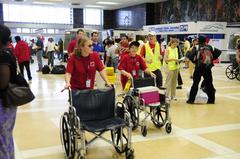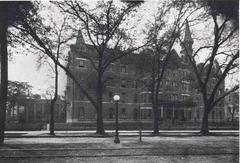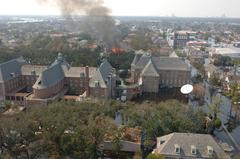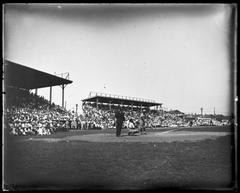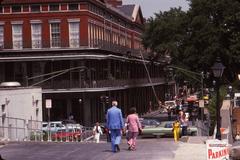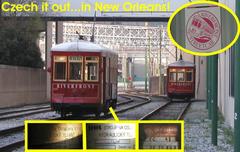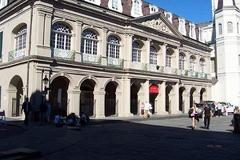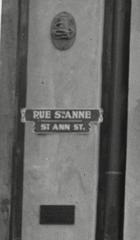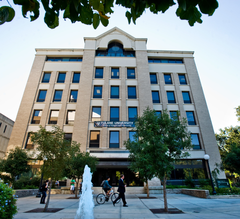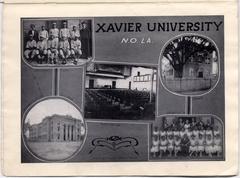Camp Algiers Visiting Hours, Tickets, and Historical Sites in New Orleans
Date: 03/07/2025
Introduction to Camp Algiers
Camp Algiers, located in the storied Algiers neighborhood of New Orleans, Louisiana, provides a compelling window into a little-known chapter of American and World War II history. Originally constructed as a U.S. Immigration Station and quarantine facility in the early 20th century, the site became particularly noteworthy during World War II when it was repurposed as an internment camp. Here, thousands of “enemy aliens”—including German, Japanese, and Italian nationals from Latin America, as well as Jewish refugees fleeing Nazi persecution—were detained. Today, Camp Algiers serves as both a historical landmark and a cultural touchstone within the vibrant, multicultural community of Algiers. This guide explores Camp Algiers’ history, practical visiting information, travel tips, cultural highlights, and nearby attractions, ensuring you get the most from your visit to this unique New Orleans site. For deeper historical context, see resources like GAIC.info, Latinousa.org, and the New Orleans Official Guide.
Table of Contents
- Introduction
- Historical Overview
- Camp Algiers in the Broader U.S. Internment System
- Community & Cultural Impact
- Planning Your Visit: Hours, Tickets & Accessibility
- Neighborhood Attractions & Experiences
- Local Traditions, Music, and Food
- Architecture & Urban Landscape
- Visitor Tips & FAQs
- Resources & Further Reading
- Conclusion
Historical Overview
Origins and WWII Role
Camp Algiers began as a U.S. Immigration Station and quarantine facility due to its strategic location across the Mississippi River from the French Quarter (GAIC.info). During World War II, the U.S. Department of Justice transformed it into an internment camp for so-called “enemy aliens.” The Roosevelt administration, in partnership with nearly 20 Latin American countries, deported thousands to U.S. camps, including Camp Algiers. Many were innocent refugees, including Jews escaping Nazi terror, caught up in the U.S. government’s Enemy Alien Control Program (Latinousa.org).
The Internment of Jews and Other Refugees
Camp Algiers held a diverse group of internees—Germans, Japanese, Italians, and especially Jewish refugees. Many were arrested on dubious accusations, often fueled by informants seeking personal gain (Latinousa.org). Despite the trauma, internees at Camp Algiers were sometimes afforded relatively humane conditions, such as access to books, music, and religious services, and children could attend nearby schools.
Legacy and Modern Recognition
Although little of the original camp infrastructure remains, local organizations and historical societies have preserved documents, photographs, and oral histories. Today, Camp Algiers stands as a poignant reminder of the perils of wartime fear and the resilience of those unjustly detained (Latinousa.org).
Camp Algiers in the Broader U.S. Internment System
Camp Algiers was part of a larger network of internment facilities overseen by the U.S. Department of Justice. At its peak, it held hundreds under strict surveillance. The site’s history is intertwined with broader themes of displacement, civil liberties, and the social impacts of global conflict (Latinousa.org).
Community & Cultural Impact
The Algiers neighborhood is New Orleans’ second-oldest, founded in 1719, and reflects a deep multicultural heritage shaped by Americans, Germans, Irish, and Italians (New Orleans Official Guide). Camp Algiers adds a somber but essential chapter to this story, particularly for the city’s Jewish and immigrant communities.
Planning Your Visit: Hours, Tickets & Accessibility
Current Site Status
Camp Algiers itself is not a traditional museum. Most camp structures no longer stand, and the area is unstaffed and uncurated. Instead, visitors can explore the Algiers neighborhood, where historical markers and walking tours illuminate the camp’s history.
- Visiting Hours: The neighborhood is open year-round. Walking tours are often available during daylight hours; check with the Algiers Historical Society or local tour operators for schedules.
- Tickets: Most walking tours are free or low-cost; some require advance reservations.
- Accessibility: The area is accessible by ferry (from Canal Street), car (via the Crescent City Connection), or public transit. Most routes are walkable, though some terrain may be uneven.
- Safety: The site is not monitored; exercise caution, avoid unstable structures, and respect the solemnity of the grounds.
Directions
- Ferry: The Algiers Ferry departs from Canal Street and costs $2 each way (cash only), with scenic views of the New Orleans skyline. Ferries run from 6:00 AM to 9:45 PM on most days.
- Driving: Use the Crescent City Connection bridge for direct access to Algiers Point.
Neighborhood Attractions & Experiences
Algiers Point & Historic Sites
- Algiers Point: A charming enclave with walkable streets, Creole cottages, and historic sites.
- Notable Landmarks: Algiers Courthouse (1896), Behrman House, Algiers Point Branch Library (the city’s oldest).
- Folk Art Zone and Blues Museum: Showcases New Orleans’ musical and artistic legacy (Astrid Travel).
Local Music & Nightlife
- Old Point Bar & Crown and Anchor Pub: Local favorites offering live music and a taste of neighborhood hospitality.
Local Traditions, Music, and Food
Algiers Mardi Gras Festival
Experience the local flavor at the annual Algiers Mardi Gras Festival, where community parades, brass bands, and traditional cuisine come together (Inside NOLA). The festival features arts and crafts, local food stalls (gumbo, jambalaya, pralines, crawfish bread), and vibrant handmade masks.
Culinary Experiences
- Cafés: Congregation Coffee Roasters, Tout de Suite Café—perfect for breakfast or a coffee break.
- Dining: Dry Dock Café and Tavolino Pizza and Lounge serve local specialties in a relaxed, neighborhood setting.
Architecture & Urban Landscape
Stroll among Victorian cottages and oak-lined streets. Notable sites include Holy Name of Mary Church (Gothic Revival) and the Hubbell Library (built 1907). The area’s tranquil parks and riverfront levees offer scenic respite (New Orleans Official Guide).
Visitor Tips & FAQs
Practical Tips
- Visit during daylight hours for safety.
- Wear comfortable shoes; bring water and sun protection.
- Use the ferry for a scenic approach.
- Learn about the camp’s history in advance to enrich your visit.
- Treat the site respectfully.
Frequently Asked Questions
Q: What are the visiting hours for Camp Algiers?
A: The site is generally accessible during daylight hours. Guided tours may be available by appointment on weekdays from 9 a.m. to 5 p.m.
Q: Are there tickets or entrance fees?
A: There are no formal entrance fees. Some walking tours may require tickets or advance booking.
Q: Is Camp Algiers accessible for people with disabilities?
A: Most neighborhood routes are walkable; accessibility accommodations can be arranged with tour providers.
Q: How do I get to Algiers from downtown New Orleans?
A: Take the Algiers Ferry from Canal Street or drive via the Crescent City Connection.
Q: Are there guided tours of Camp Algiers?
A: No official tours of the camp itself, but neighborhood tours often include historical context.
Resources & Further Reading
Conclusion
Camp Algiers is a powerful, often overlooked site that connects New Orleans’ local heritage to global wartime events. While the physical remains are minimal, the stories preserved by the neighborhood, historical societies, and cultural festivals ensure Camp Algiers’ legacy endures. Visiting this site offers a unique opportunity to reflect on the complexities of civil liberties, immigration, and community resilience. Take time to explore Algiers’ historic streets, support local businesses, and engage with the living history around you.
For more information and travel tips, download the Audiala app, explore related posts, and follow us on social media. Enhance your journey through New Orleans’ history and culture—beginning with Camp Algiers.

